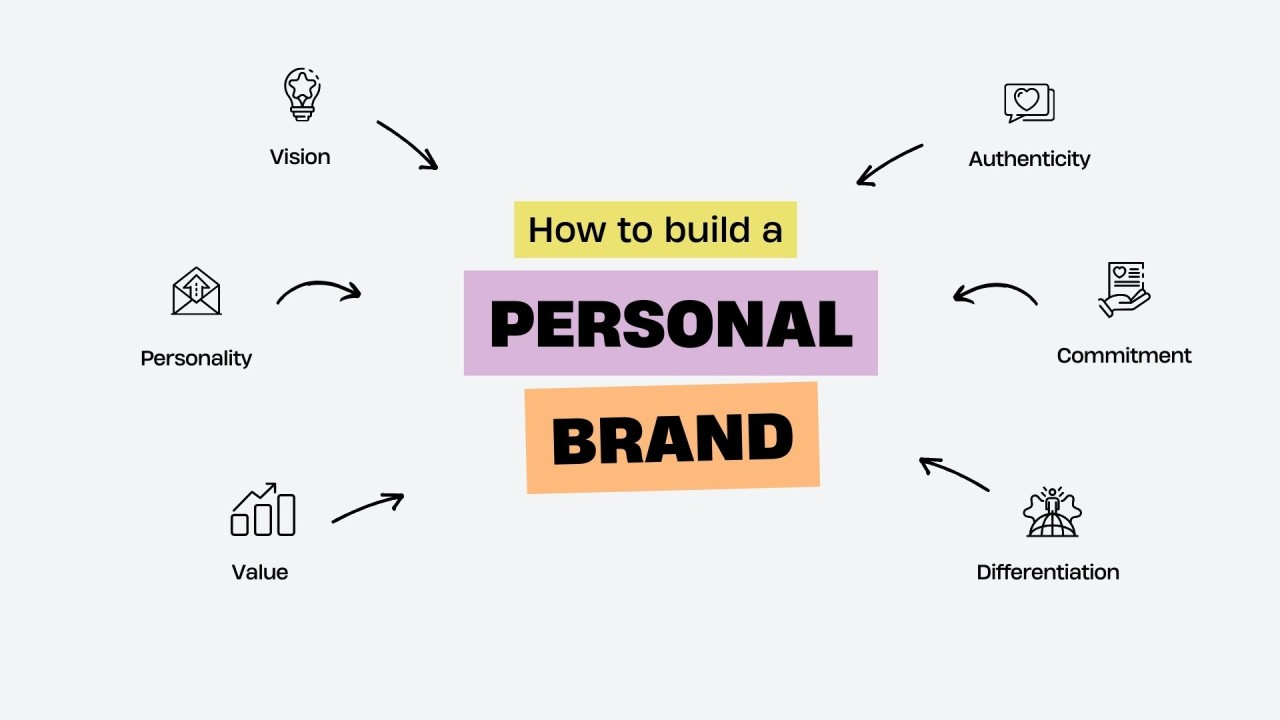A strong personal brand is crucial in today's competitive business environment, as it can open new opportunities, establish credibility, and make you memorable. It's the process of defining and promoting your unique skills, experiences, and personality.

Step 1: Define Your Brand Purpose
The first step in building a personal brand is to identify and articulate your brand purpose. For example, if you’re a marketing professional passionate about sustainability, your brand could be built around promoting Eco-friendly business practices.
Step 2: Identify Your Target Audience
Understanding who you want to reach will help you tailor your messaging and determine the best platforms to engage with your audience. For example, if you're a career coach targeting recent graduates, your audience is likely to be active on LinkedIn, and platforms where they seek career advice.
Step 3: Craft Your Brand Message
Your brand message is how you communicate your purpose, values, and expertise to your audience. It should be clear, concise, and consistent across all platforms. To craft a compelling brand message:
1. Develop Your Unique Value Proposition (UVP):- This is a statement that summaries the unique benefits you provide to your audience.
2. Create a Brand Story:- Your story should align with your purpose and convey why you’re passionate about what you do.

Step 4: Build Your Online Presence
In the digital age, your online presence is the most visible aspect of your personal brand. To build a strong online presence:
1. Create a Professional Website:- Your website serves as the hub of your personal brand. Ensure that your social media profiles are aligned with your brand message.
2. Choose the Right Platforms:- Not every platform will be relevant to your brand. Focus on the platforms where your target audience is most active.
3. Content Creation and Curation:-Consistently sharing valuable content is crucial for maintaining visibility.
Step 5: Network and Build Relationships
Networking allows you to connect with others, gain new insights, and expand your influence. Here’s how to network effectively:
1. Attend Industry Events:- Conferences, webinars, and workshops are great opportunities to meet like-minded individuals and industry leaders.
2. Join Professional Groups:- Participate in online communities, forums, or social media groups related to your industry. Partnering with others on projects, guest blogging, or co-hosting events can increase your visibility and credibility.
Step 6: Monitor and Adapt Your Brand
Your personal brand is not static; it evolves as you grow in your career or business. Regularly assessing and adapting your brand is crucial to staying relevant and authentic. Here’s how to monitor and adapt your brand:
1. Seek Feedback:- Ask for feedback from your audience, peers, or mentors to understand how your brand is perceived.
2. Continue Learning:- The landscape is always changing, and so should you. Stay updated on industry trends, learn new skills, and keep expanding your knowledge.

Step 7: Be Patient And Consistent
Building a personal brand takes time and effort. It’s a long-term investment that requires patience, consistency, and persistence. Here are some tips for staying on track:
1. Set Goals:- Whether it’s increasing your online following, getting featured in industry publications, or landing speaking gigs, having goals will keep you focused. Consistency is key to building trust and recognition.
2. Stay Positive:- There will be challenges and setbacks along the way, but maintaining a positive attitude will help you overcome them and stay motivated.
Step 8: Measure Your Success
To ensure that your efforts are paying off, it’s important to measure the success of your personal brand. Consider the following metrics:
1.
Online Engagement:- Track the likes, shares, comments, and overall engagement
on your social media posts and blog articles.
2. Networking Opportunities:- Consider how many new connections you’ve made, the number of collaborations or speaking opportunities you’ve received, and the growth of your professional network.
3. Professional Growth:- Reflect on how your personal brand has contributed to your career or business growth.

Concluding thoughts
Building a personal brand is a powerful way to differentiate yourself, establish authority, and create growth opportunities. It involves defining purpose, crafting compelling messages, building an online presence, networking, and adapting to resonate with your audience.
By following these steps, you’ll be well on your way to building a personal brand that stands out and makes a lasting impact.
How to build a Personal Brand?